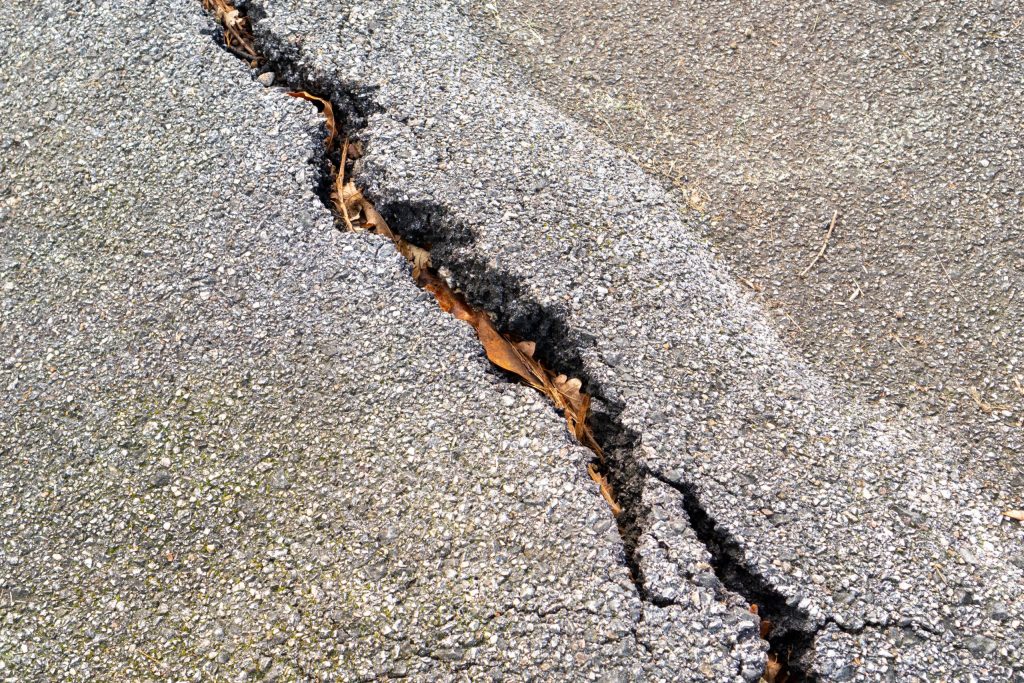Are you tired of pulling into your driveway only to be greeted by cracks, potholes, and unsightly stains? Driveway problems can be a major headache for homeowners, but understanding the common causes of damage can help you prevent them from happening in the first place.
In this article, we’ll take a closer look at three of the most common driveway problems and what you can do to keep your driveway looking its best.
Problem 1: Cracks
First up on our list of driveway problems are cracks. These pesky crevices can be caused by a variety of factors, including changes in temperature, heavy vehicles, and improper installation. Water entering these cracks can cause them to expand and worsen over time. This can lead to more significant problems like potholes and uneven surfaces.
If left untreated, cracks can also allow water to seep beneath the surface, causing erosion and compromising the stability of your driveway. So, what can you do to prevent cracks from forming in the first place? Using high-quality materials and ensuring proper installation can help. Regular cleaning and sealing can also help protect your driveway from the elements and keep it looking its best. But if you notice cracks starting to form, addressing them promptly is essential to prevent further damage.
Problem 2: Potholes
The second common problem that plagues driveways is potholes. These are deep, bowl-shaped holes that can be extremely hazardous and unsightly. They usually form due to a combination of factors, including water damage, freeze-thaw cycles, and heavy traffic. As water seeps into the cracks on the driveway’s surface, it can freeze and expand, causing the asphalt to weaken and break apart. This can cause larger areas to break away, leaving behind a pothole.
Potholes can be more than just an eyesore, though. They can damage vehicles and pose a safety hazard for drivers and pedestrians. It’s vital to address potholes as soon as possible to prevent them from worsening. Repair options for potholes can range from a simple patch to more significant resurfacing or replacement, depending on the severity of the damage.
Maintaining your driveway correctly is crucial to prevent potholes from forming. Regular cleaning and sealing can help protect the surface from water damage, and avoiding heavy vehicles or equipment can also help reduce the risk of damage. If you notice any signs of a pothole forming, addressing it promptly before it becomes a more significant issue is essential.
Problem 3: Stains and discoloration
The third common driveway problem is unsightly stains and discoloration. These can be caused by a variety of factors, such as oil leaks, tire marks, and rust. Over time, these stains can be difficult to remove and can reduce the curb appeal of your home.
Preventing stains and discoloration can be challenging, but regular cleaning and maintenance can help. A driveway cleaner and degreaser can help remove oil and grease stains, and a pressure washer can help remove tire marks and other surface stains. If you notice rust stains, you may need a specialized cleaner or contact a professional to address the issue.
Sometimes, the only way to remove stains and discoloration may be through resurfacing or replacing the driveway. While this can be a significant investment, it can also provide an opportunity to improve your driveway’s overall look and function.
To keep your driveway looking its best, staying on top of maintenance and addressing any issues as soon as possible is essential. Taking care of your driveway can help avoid costly repairs and keep your home looking great.
Prevention and maintenance
To prevent driveway problems from occurring, regular maintenance is key. Here are some tips to help keep your driveway in top condition:
- Use high-quality materials: Investing in high-quality materials can help ensure your driveway withstands the elements and heavy traffic.
- Proper installation: Ensure that your driveway is installed correctly, with a sturdy foundation and proper drainage.
- Regular cleaning: Cleaning your driveway regularly can help prevent dirt, debris, and other materials from causing damage over time.
- Sealing: Sealing your driveway can help protect it from the elements and prevent water from seeping into cracks and causing damage.
- Avoid heavy vehicles: If possible, try to avoid parking heavy vehicles or equipment on your driveway, as this can cause significant damage over time.
Even with proper maintenance, your driveway may still experience problems over time. Here are some repair options to consider:
- Patching: If you notice small cracks or potholes, patching may be a good option to prevent further damage.
- Resurfacing: If your driveway has significant damage or stains, resurfacing can provide a fresh layer of asphalt or concrete to improve its appearance and function.
- Replacement: In some cases, the only way to address significant damage or discoloration may be to replace the driveway. While this can be a significant investment, it can also provide an opportunity to improve your driveway’s overall look and function.
Key Takeaways
- Changes in temperature, heavy vehicles, and improper installation can cause cracks. Regular cleaning and sealing can help prevent cracks from forming and worsening.
- Potholes are deep, bowl-shaped holes that can be caused by water damage, freeze-thaw cycles, and heavy traffic. Prompt repairs can prevent potholes from getting worse and posing a safety hazard.
- Oil leaks, tire marks, and rust can cause stains and discoloration. Regular cleaning and maintenance can help prevent these issues from occurring and resurfacing or replacement may be necessary in some cases.
- Preventative measures such as using high-quality materials, proper installation, regular cleaning, sealing, and avoiding heavy vehicles can help keep your driveway in top condition.
- Repair options such as patching, resurfacing, or replacement can address common driveway problems.

